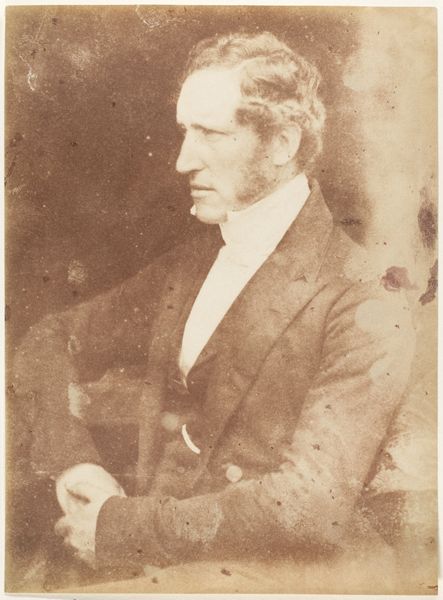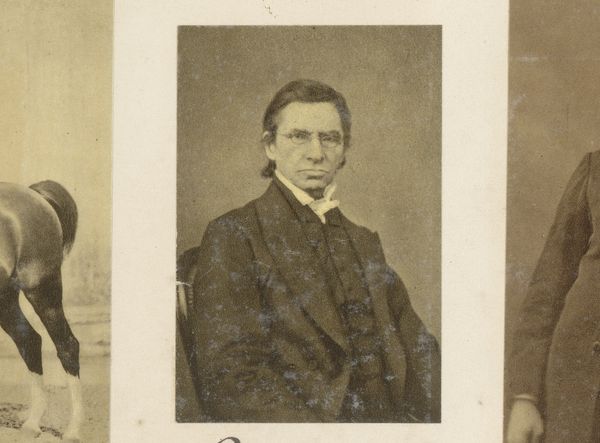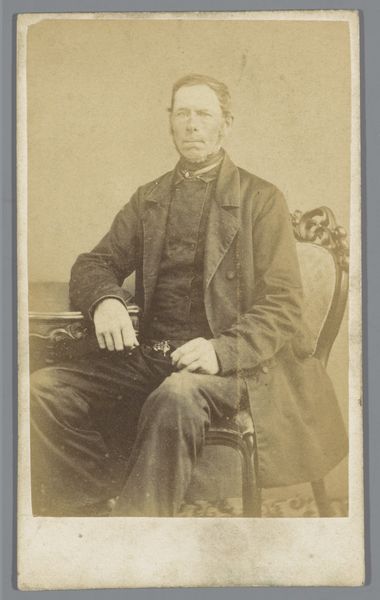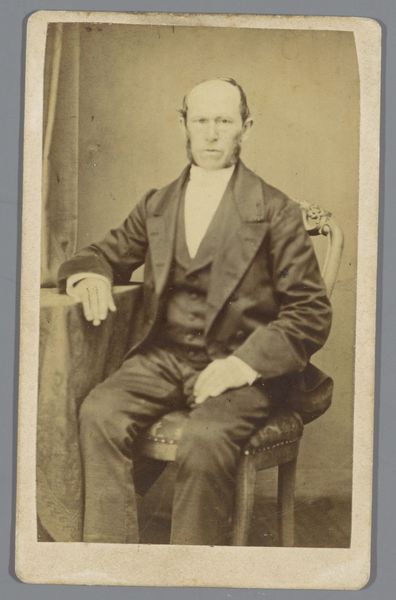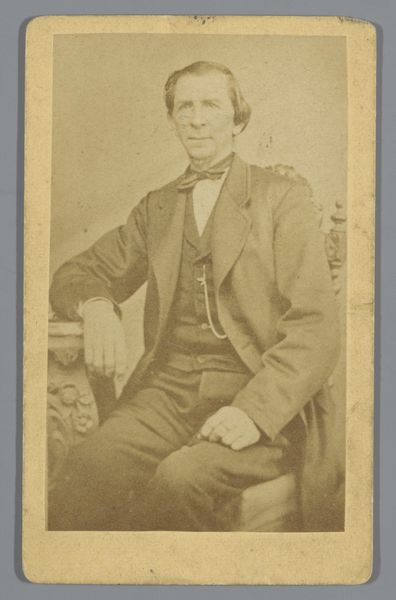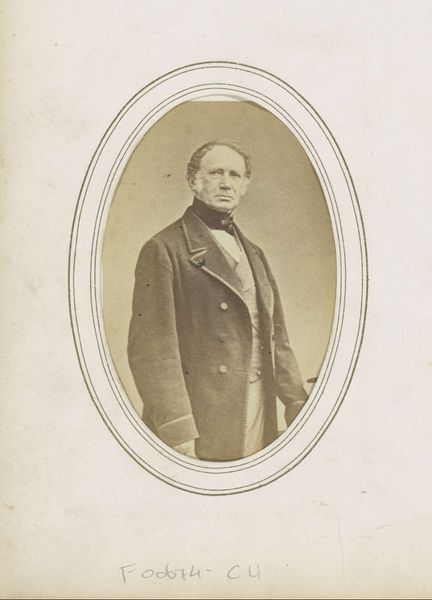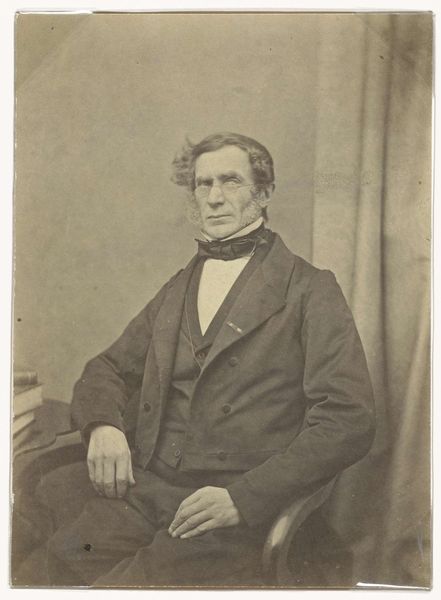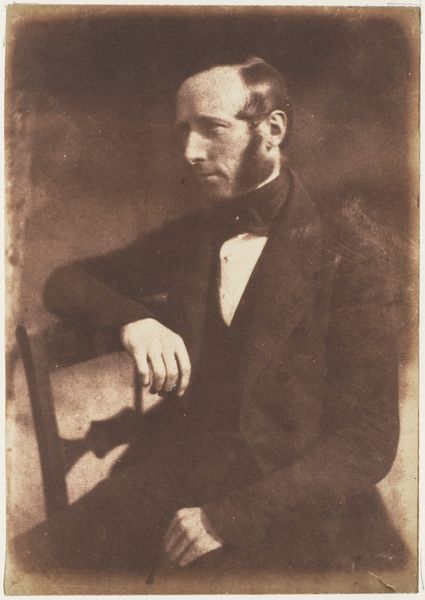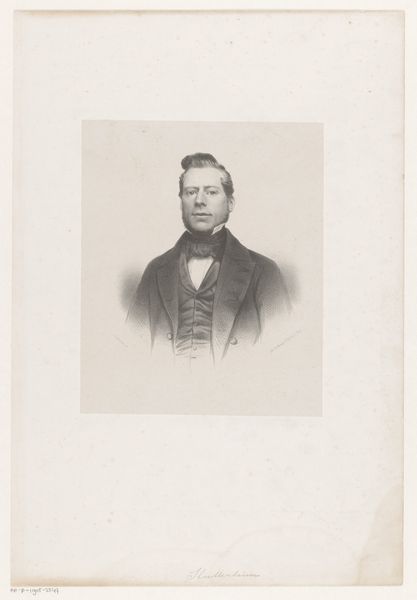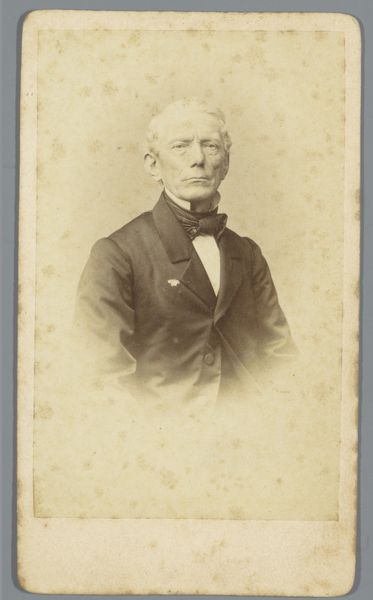
daguerreotype, photography
#
portrait
#
daguerreotype
#
photography
#
romanticism
#
men
Copyright: Public Domain
This portrait of Jacob Abbott was made using the calotype process in Scotland between 1843 and 1848 by the photographic partnership of David Hill and Robert Adamson. The introduction of photography was a profoundly disruptive event in the cultural history of the 19th century. For the first time, images could be mechanically produced and disseminated widely. Artists like Hill and Adamson quickly identified the medium's possibilities, and their work became immensely popular in Scotland. But in the context of portraiture, what did it mean to represent an individual like Jacob Abbott in this new way? What were the social and cultural implications of photographic representation? Was it considered to be democratic and egalitarian or did it become another marker of status and class? Such questions invite us to consider the institutional and social forces that shaped the production and reception of early photography and they remind us that the meaning of art is always contingent on its historical context.
Comments
No comments
Be the first to comment and join the conversation on the ultimate creative platform.

